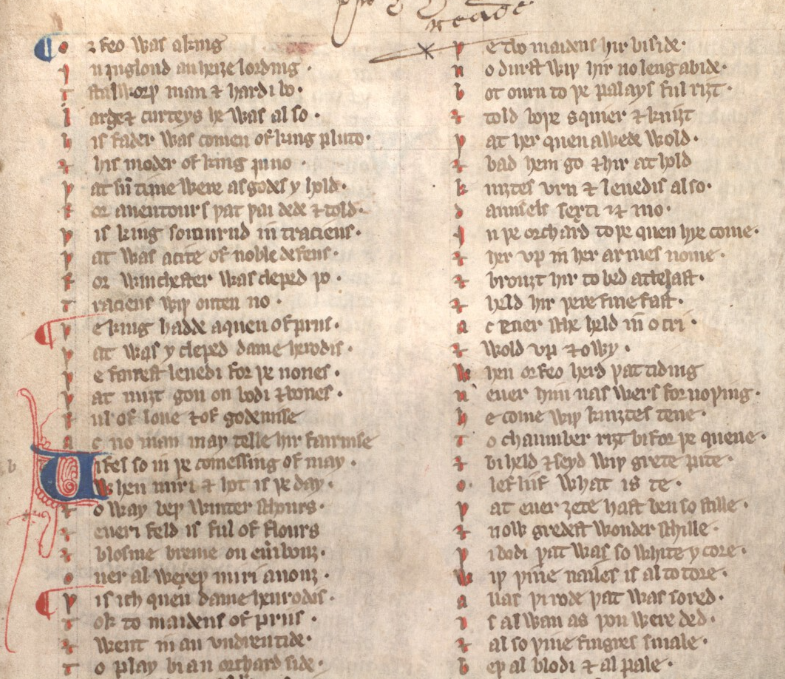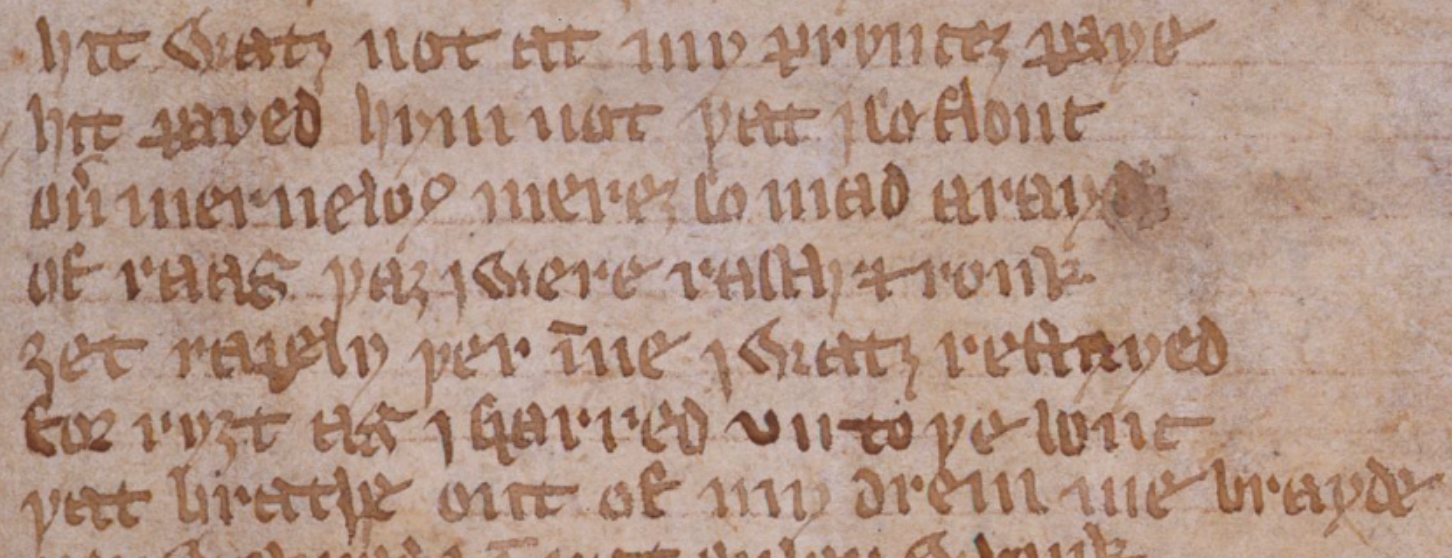Just out from me in Textual Practice, ‘Manuscript Canonicity‘: an article exploring how manuscripts themselves can generate prestige in present-day scholarship. This article’s published open access!…
Leave a CommentAuthor: Daniel Sawyer
Here’s the cover for How to Read Middle English Poetry! The image is part of Manchester, John Rylands Library, MS Eng. 1 (a copy of Lydgate’s…
Leave a CommentMy next book, How to Read Middle English Poetry, is now available for pre-order from Oxford University Press! Here’s the blurb: How to Read Middle English…
Leave a CommentI have just signed the contract for my second book, How to Read Middle English Poetry, forthcoming from Oxford University Press.
How to Read explains, in clear, student-friendly terms, how to find, understand, and analyse English poetry 1150–1500, for study or pleasure. I built the book to be useful even if you don’t have a great library or anthology to hand. Where possible, the discussion uses poetry in the fine TEAMS-METS series, which all have stable print forms, but can be read for free online.
One CommentIn October, I’ll take up a new job: Departmental Lecturer in English Literature and Manuscript Studies, 650–1550, in Oxford’s English Faculty. A bit of a mouthful, but I’m glad they fitted the ‘English Literature’ bit in there.
I’ll be teaching the Faculty master’s module in palaeography, codicology, and textual criticism, and, around that, also contributing to undergraduate lectures and tutorials on verse form, lyric, and manuscripts.
This change means I will also leave Merton College, which has been my home since January 2019. Thanks to covid, January 2019 lies an unimaginably long time ago, and I’ll miss Merton’s community and the admirable students that I’ve had the great luck to teach there. Happily, though, I shall move to St Hilda’s College, where I studied for my master’s and doctorate, as an Associate Research Fellow. I’ve very fond memories of graduate study at St Hilda’s, and I look forward to returning to the college in a new position.
Leave a Comment
The Review of English Studies has just published my latest article, ‘Verse-Craft, Editing, and the Work: Shadows of Orfeo‘. In it, I explore what potential the concept of the work has to help us in understanding early English material which exists in multiple witnesses, using Orfeo as my example and attention to the craft of verse as my method.
Leave a Comment
I don’t normally find myself writing about Thom Gunn’s poetry. But I like Gunn, and while reading The Man with Night Sweats earlier this year I stumbled on a passage in ‘Lament’ which sounded insistently like the end of Pearl.
Could this be an allusion, or was my mind merely seeing Pearl everywhere? I tweeted, and friends agreed that there might be a there there. Looking more closely, I realised that ‘Lament’ displays some formal resemblances to Pearl too. It was time to write a note.
Leave a CommentWe’ve not had a good couple of years for conferences, to put it lightly. I’m happy to report that I’ll be giving a paper at…
Leave a CommentThe Chaucer Review has published my latest article, ‘Form, Time, and the “First English Sonnet”‘. You can find it on JSTOR or on Project Muse,…
Leave a Comment
I have, as a side project, drafted a teaching book: a guide for students to help with the close reading of Middle English and Older Scots poetry. It is provisionally called How to Read Middle English and Older Scots Poetry.
Leave a Comment